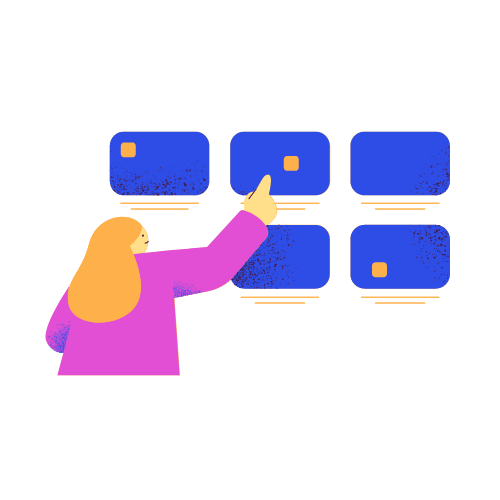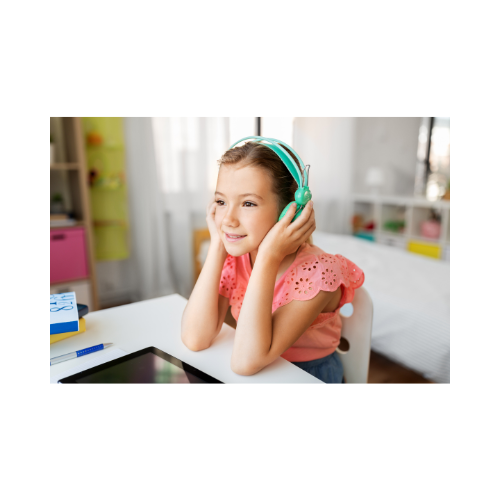Enhancing Education Through the Use of New Tools
- jessikaledezma
- Feb 14, 2024
- 5 min read
Introduction
Educators continuously seek innovative methods to engage and empower learners in the fast-paced digital age. Effective teaching in today's classroom requires embracing new mediums and methodologies while retaining the core strengths of traditional techniques. As education prioritizes creativity, collaboration, communication, and technology integration, teachers must adapt to leverage emerging tools that align with these skills.
Storyboarding

Retrieved from Canva
Storyboarding, a technique commonly utilized in filmmaking and animation, holds immense potential as a pedagogical tool in educational settings. Storyboarding is a visual storytelling technique that involves creating a sequence of images to outline a narrative. Pappas explains, "A storyboard is a map that guides eLearning professionals through every twist and turn of their eLearning course design.” Storyboarding is a powerful tool for planning and structuring instructional content in educational contexts. Educators can scaffold information effectively by breaking down complex concepts into visual elements, leading students through a coherent learning journey. From conceptualizing ideas to outlining narratives, storyboarding empowers educators to craft immersive learning experiences that resonate with students. Educators can encourage active participation by involving students in creating and fostering critical thinking, creativity, and collaboration.

Retrieved from Canva
Neelakandan (2021) states, "It is important to have a clear picture of what you want to achieve with your storyboard before creating the eLearning course.” To create an effective storyboard, designers need to ask a few questions:
· Why are you creating the course content?
· What are your main objectives for creating the eLearning course?
· What will the outcome of the eLearning course be?
· What is in it for the learner?
· What do you want your learners to do after taking your eLearning module?
· How can you engage the learner?
Whether students draw the images themselves, take pictures of props they manipulate, or find images via open-source sites, the objectives and learning outcomes remain the same; forcing students to process and show their thinking (Bakkegard,2023). It may be true that no two eLearning courses are alike, but every eLearning experience should begin with a successful storyboard.
Podcasts

Retrieved from Canva
Gray argues, "A podcast can be a better reminder than an email that often ends up unopened or skimmed over and ignored” (2022). Podcasts have emerged as a dynamic medium for delivering educational content, that offer a useful platform for exploration and discovery. Gray (2022) states, "Podcasts can be downloaded to a mobile device, allowing the student to access the learning resources anytime, anywhere, with very little effort.” Podcasts engage learners in meaningful conversations through audio narratives, sparking curiosity and encouraging active participation. The accessibility and portability of podcasts make them invaluable tools for reaching learners beyond the limits of the traditional classroom, which facilitates self-directed learning and exploration. Examples of using a podcast can be to explore historical events, dissect scientific concepts, or discuss readings. Podcasts provide an accessible opportunity for students to dive into various topics. Additionally, podcasts provide a platform for experts and educators to share their knowledge and expertise, that enrich the learning experience with diverse perspectives and real-world insights. As educators explore the potential of podcasts in education, they must consider strategies for effectively curating and integrating podcast content into their curriculum. This involves selecting podcasts that align with learning objectives, providing guidance on engaging with the content critically, and fostering opportunities for discussion and reflection. Podcasts serve diverse learning preferences, which allows students to learn new content at their own pace and convenience.
Brooke (2024) provides ten easy steps to create your own podcast.
1. Develop a podcast concept
2. Choose your podcast format
3. Setup podcast equipment
4. Choose your podcast software
5. Record your first episode
6. Edit your audio
7. Create podcast artwork
8. Set up podcast hosting
9. Get listed in podcast directories
10. Launch and grow your show
Integrating Storyboarding and Podcasts in Education and Training
For educators, embracing the principles of storyboarding and podcasts offers a pathway to transformative teaching practices. Through this integration, educators can leverage the strengths of both mediums to foster deeper engagement and comprehension among students. The fusion of storyboarding and podcasts offers a potent blend of visual storytelling and audio narratives, enhancing educational experiences and amplifying learning outcomes. Educators can maintain coherence and clarity throughout the audio narrative by integrating storyboarding to outline the structure and content of a podcast series. Visual cues provided by storyboards enhance comprehension and engagement, guiding students through complex concepts with ease. Moreover, integrating storyboarding and podcasts empowers educators to cultivate essential skills such as critical thinking, communication, and creativity among their students. To apply these principles effectively, educators must embrace a growth mindset and a willingness to experiment with innovative teaching methods. Educators must explore interdisciplinary collaborations and best practices to effectively integrate storyboarding and podcasts in education and training, ensuring alignment with pedagogical goals and student needs. Furthermore, educators can leverage podcasts to supplement traditional classroom instruction, providing students with an alternative medium to explore and reinforce critical concepts. With the integration of storyboarding and podcasts, educators unlock new dimensions of learning, fostering creativity, critical thinking, and student collaboration.
Final thoughts:
The readings from this week were interesting because we keep learning that as education evolves in the digital age, it is crucial to embrace innovative approaches that cater to the diverse needs of learners. Over the past week, I learned the importance of storyboarding when creating educational content. Storyboards allow you to map out the flow of information and visuals before creating the content. Storyboarding and podcasts offer unique possibilities for enriching educational experiences, transcending traditional boundaries, and fostering a culture of curiosity and exploration. To understand these tools better, I will research ways to integrate these tools better in today's classrooms. I want to learn more about using storyboard templates and software to streamline the process. Understanding best practices for storyboarding different types of content would also be valuable. Also, I would like to create a podcast to get the experience of creating one and to teach students how it can be used to complete an assignment or even start their podcast. I wish I could utilize these tools more during my undergraduate learning journey. Understanding the power of visual storytelling and audio narratives is essential. Educators inspire students to embark on transformative learning journeys, teaching them the skills and knowledge needed to succeed in an ever-changing world.
Additional Resources
References
Bakkegard, D. (2023, December 22). Using storyboards in the classroom. Edutopia. https://www.edutopia.org/article/using-storyboards- 0000classroom/#:~:text=If%20there’s%20a%20sequence%20of,or%20what%20you%20learne d000%20today.
Brooke, A. (2024, January 1). How to start a podcast: Complete Step-by-step guide [2024]. Buzzsprout. https://www.buzzsprout.com/blog/how-to-start-a-podcast
Gray, C. (2022, October 5). Podcasting in education: What are the benefits? The Podcast Host. https://www.thepodcasthost.com/niche-case-study/podcasting-in-education/
Pappas, C. (2023, November 22). 12 tips to create effective elearning storyboards. eLearning Industry. https://elearningindustry.com/12-tips-to-create-effective-elearning- storyboards





Comments